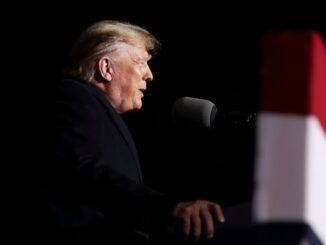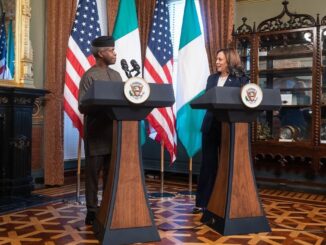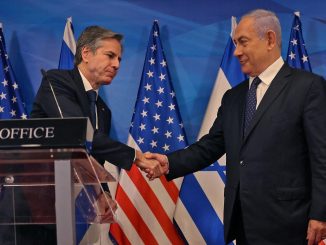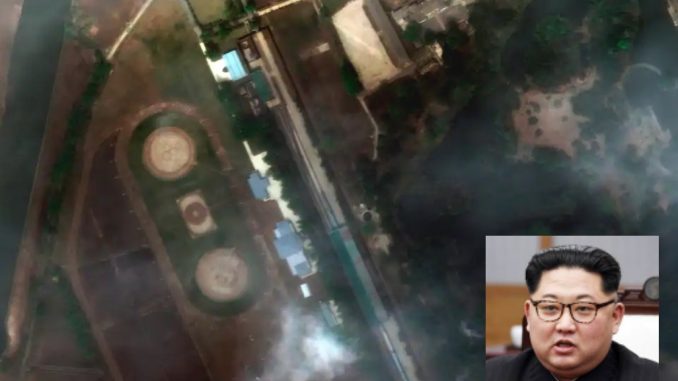
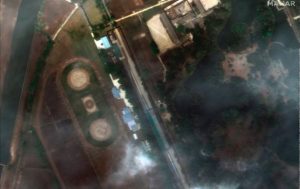
There is a possibility that leader of the North Korea, Chairman Kim Jong-un, is still alive and staying in the coastal resort of Wonsan.
Evidence supporting the claim mounts, as satellite images showed his train apparently traveled there in the past few days, and U.S. and South Korean officials said they did not believe he had died.
Rumors of the portly leader’s possible demise have been swirling since he skipped celebrations for his grandfather’s birthday on April 15, and after a South Korea media report said he had undergone a cardiovascular procedure on April 12 in a hospital outside Pyongyang and was recuperating in a nearby villa.
But U.S. and South Korean intelligence services remain skeptical of reports that Kim is dead or gravely ill, The Washijgton Post said according to three government officials familiar with the matter.
“We understand that Chairman Kim Jong Un has been in Wonsan this week,” said a South Korean official who requested anonymity to discuss sensitive intelligence matters.
Another official said that Kim’s health is among the North’s most closely guarded secrets, but noted that neither government has evidence of his death.
Commercial satellite images published by the 38 North website, affiliated to the Stimson Center, showed what appeared to be Kim’s personal, 250-meter-long train at a railway station dedicated to the Kim family in Wonsan on April 21 and 23.
The train was not present on April 15.
“The train’s presence does not prove the whereabouts of the North Korean leader or indicate anything about his health, but it does lend weight to reports that Kim is staying at an elite area on the country’s eastern coast,” Martyn Williams, Peter Makowsky and Jenny Town wrote in their report.
To be sure, something strange is going down in the intensely secretive state.
Thae Yong Ho, a former senior North Korean diplomat who defected to the South in 2016, said in a statement it was “unprecedented” that Kim did not appear to lay a wreath at the Kumsusan Palace of Sun where his grandfather and father’s bodies are both embalmed.
But the fact that Kim has not been seen in public for two weeks is not in itself unusual, falling within the “normal range” of absences for the North Korean leader, noted Rachel Minyoung Lee, a former North Korea open source intelligence analyst for the U.S. government.
Indeed, Kim disappeared from public view for three weeks between a Lunar New Year concert on Jan. 25 and another event at Kumsusan Palace of the Sun to mark his father’s birthday. He then retreated from the public eye for another 13 days before offering “guidance” for military training on Feb. 28, according to state media reports.
“His absence from the Kumsusan Palace on Kim Il Sung’s birthday was unusual, but that alone is not evidence enough to say Kim Jong Un is in trouble,” Lee said.
She added that North Korea’s silence since then should not be over-interpreted. “North Korea does not react to rumors about the leader’s health,” she said.
The Daily NK website first reported that Kim had undergone an operation on April 12 at a hospital near Mount Myohyang and was recuperating at a nearby villa.
But it is very unlikely Kim would have left the hospital and traveled by train to Wonsan, a distance of over 150 miles, if he really was gravely ill, nor would there be any reason to transport his body across the country if he had died and officials wanted to maintain secrecy.
The stakes were dramatically raised when CNN reported an unnamed U.S. official as saying Washington was monitoring intelligence suggesting Kim was in “grave danger” after undergoing surgery. But officials in Seoul and Washington soon downplayed or contradicted that report.
On Saturday, Reuters reported that China had dispatched a team including medical experts “to advise on” Kim, citing three unnamed sources, but the news agency cautioned that it was “unable to immediately determine what the trip by the Chinese team signaled in terms of Kim’s health.”
A Japanese magazine fueled the rumor mill by citing a single unnamed Chinese medical source as saying Kim was in a “vegetative state” after an operation went wrong, while a Hong Kong TV executive posted on social media that Kim was dead.
Kim is overweight and is frequently seen smoking: it would hardly be a surprise to discover he had heart problems. But the fact that his train appears to have moved around the country recently, along with other indications he is in Wonsan, contradict the notion he is at death’s door.
Dong-a Ilbo, a South Korean newspaper, cited a U.S. official in Washington saying Kim had been seen walking around in Wonsan.
For many experienced North Korea watchers, this is not unfamiliar territory.
Over the years there have been many false death reports about all three North Korean leaders. Kim Jong Un had gone into seclusion and missed important public events before, only to subsequently reemerge, noted Bruce Klingner, a former U.S. intelligence official who now works at the Heritage Foundation.
“On the other hand, the first that the US Intelligence Community and even North Korean ministries knew of Kim Jong Il’s death in 2011 was the official announcement two days later,” Klingner noted.
When Kim Jong Il had a stroke in 2008, Thae said colleagues at the Foreign Ministry knew nothing for an entire week, even as official documents needing the leader’s approval piled up.
But it is also noteworthy that French doctors attended the North Korean leader on that occasion, experts say, and it is far from clear North Koreans would invite in Chinese officials and doctors — and possible Chinese meddling — if there really was a succession crisis being played out behind the scenes.
North Korea’s relationship with China is more based on tolerance and overlapping interests than any real trust.
Indeed, experts, officials and diplomats say concerns about the coronavirus pandemic represent another perfectly plausible theory to explain Kim’s vanishing act, especially if a senior official had contracted the virus or come into contact with someone who had.
The regime has repeatedly underlined its deep concern about a possible outbreak of coronavirus, and completely shut its borders early in the outbreak.
A World Health Organization official told Voice of America this week that 740 had been tested for the new coronavirus by April 17 and all were found not to be infected.
But many health experts are skeptical, and Radio Free Asia reported that officials admitted the virus had spread through the country, when talking with local organizations and neighborhood watch units.
The Tokyo Shimbun newspaper reported that Kim appears to be undergoing “voluntary isolation” in Wonsan, citing a high-ranking Japanese government official, and quoted North Korean sources as saying he had gone there after one of his bodyguards was found to have the virus. That’s not the sort of thing North Korea would ever publicly admit, especially because it insists it has no cases of the virus.
ALSO READ:
Meanwhile, there may have been no new photographs of Kim on North Korea state media for two weeks, but there is still no sign of anything amiss.
This week, Kim has sent messages to Syrian President Bashar al-Assad and Cuban President Miguel Díaz-Canel, the state Korea Central News Agency reported, while he also sent a letter to construction workers thanking them for building the city of Samjiyon, the official Rodong Sinmun newspaper reported on Sunday.
“Experienced Korea watchers are counseling ‘we don’t know, we have to wait for confirmation, so have another drink,’” Klingner said, “while those new to North Korea are taking the rumors at face value and panicking about loss of control of nuclear weapons.”



